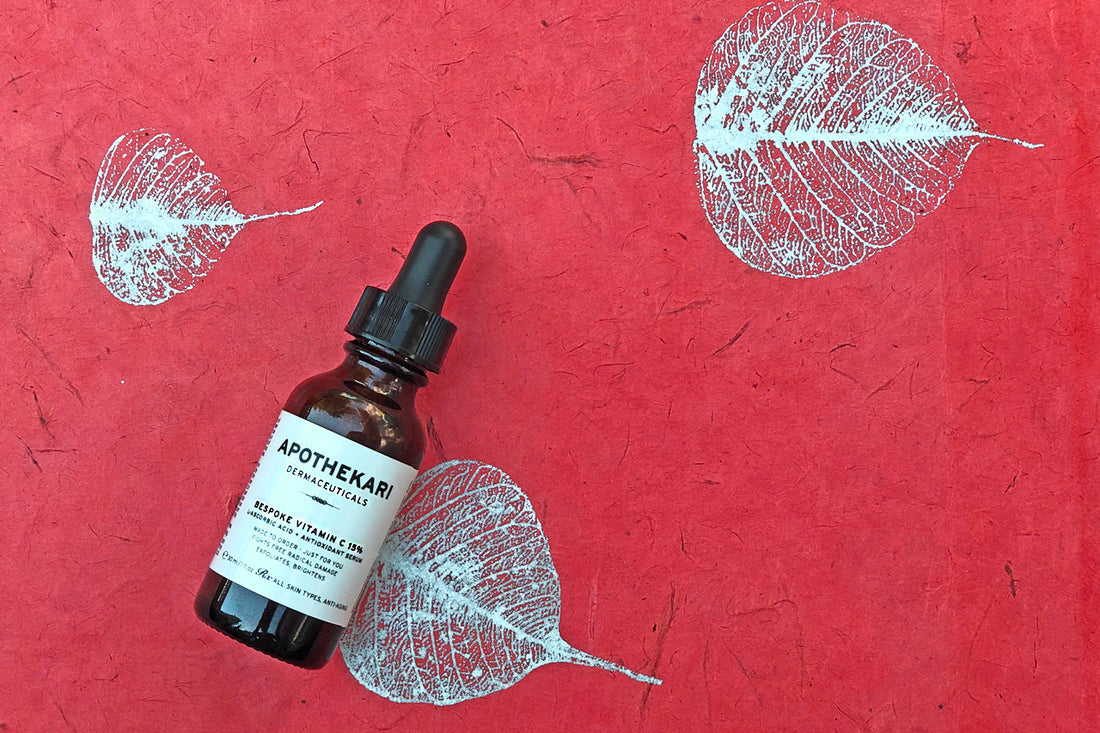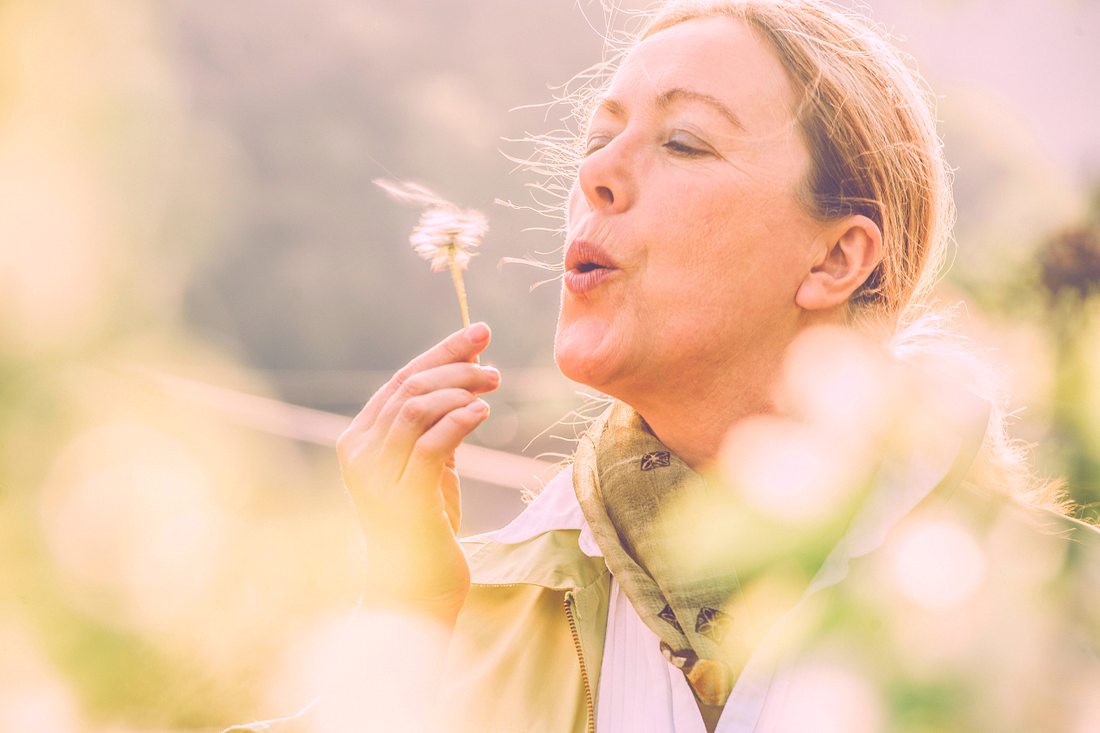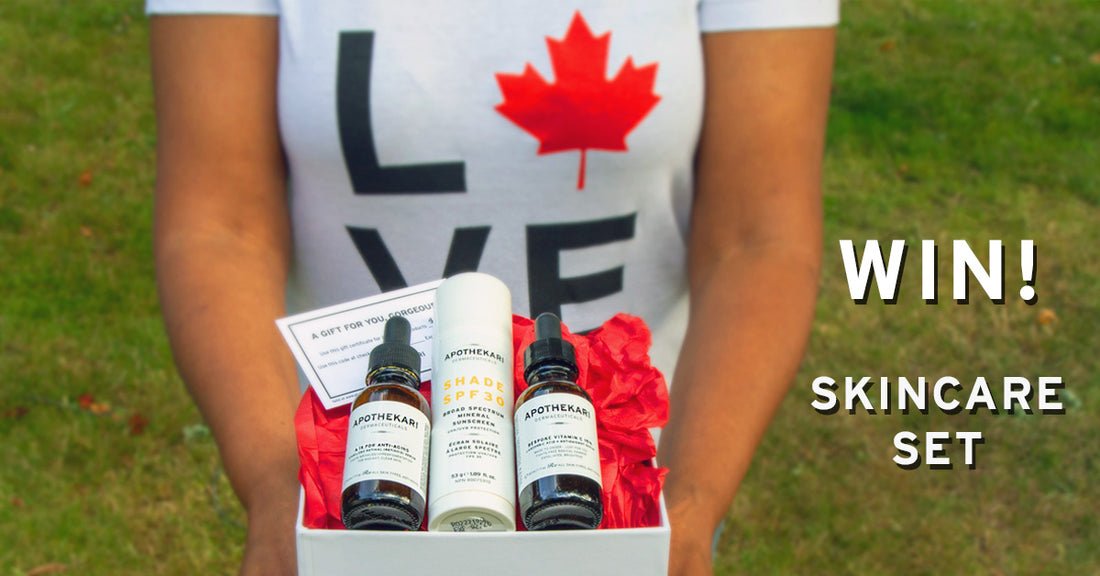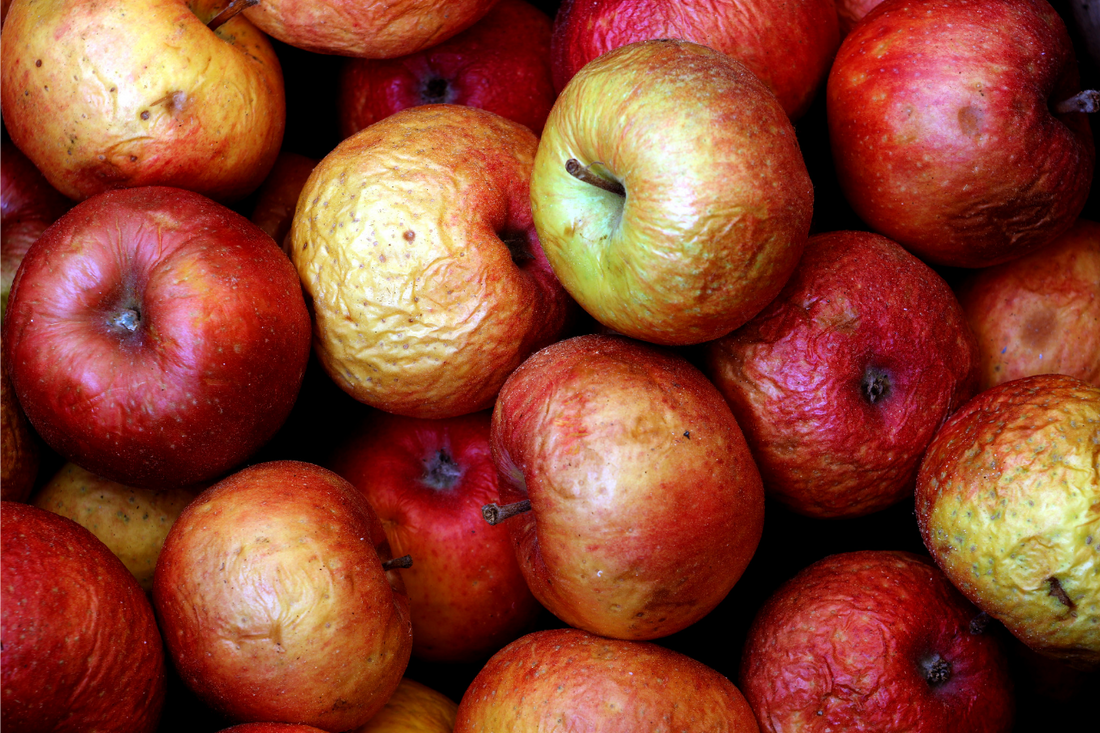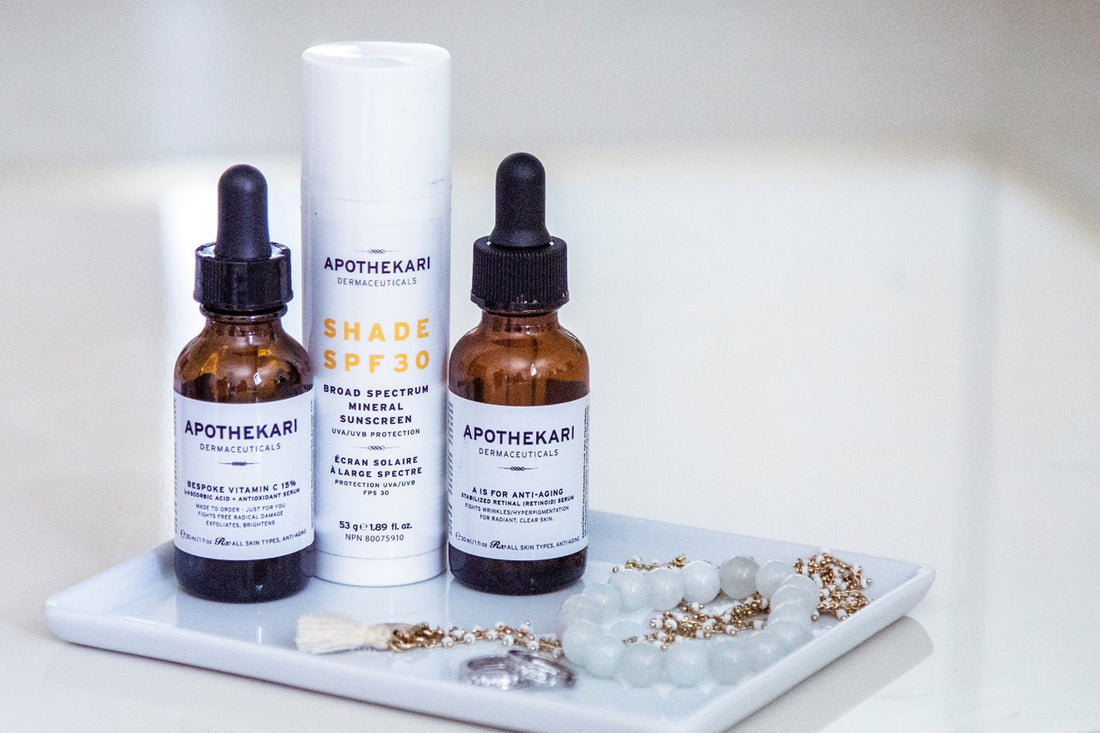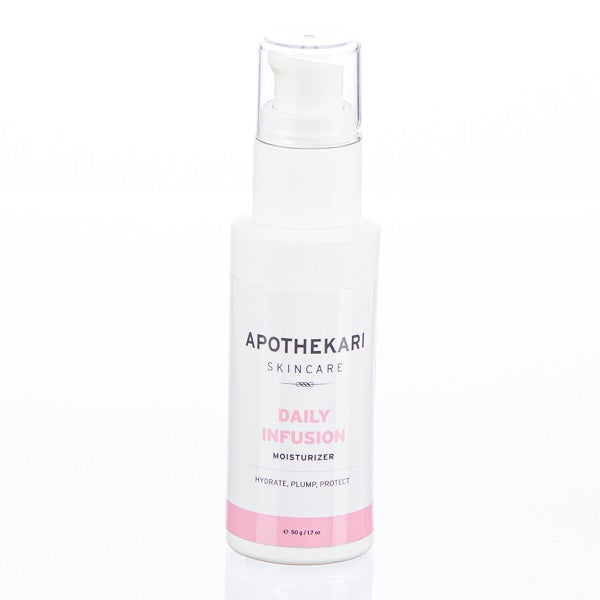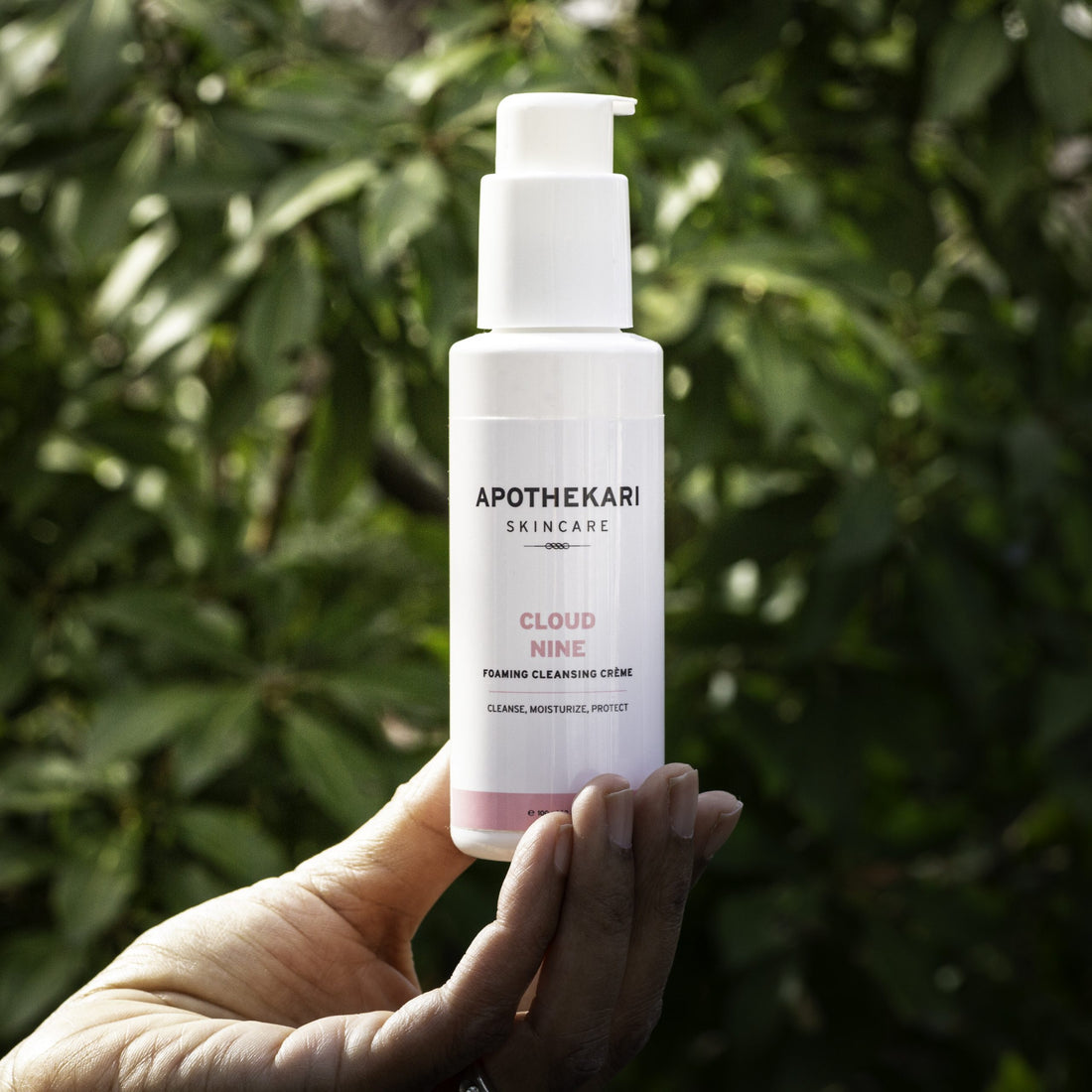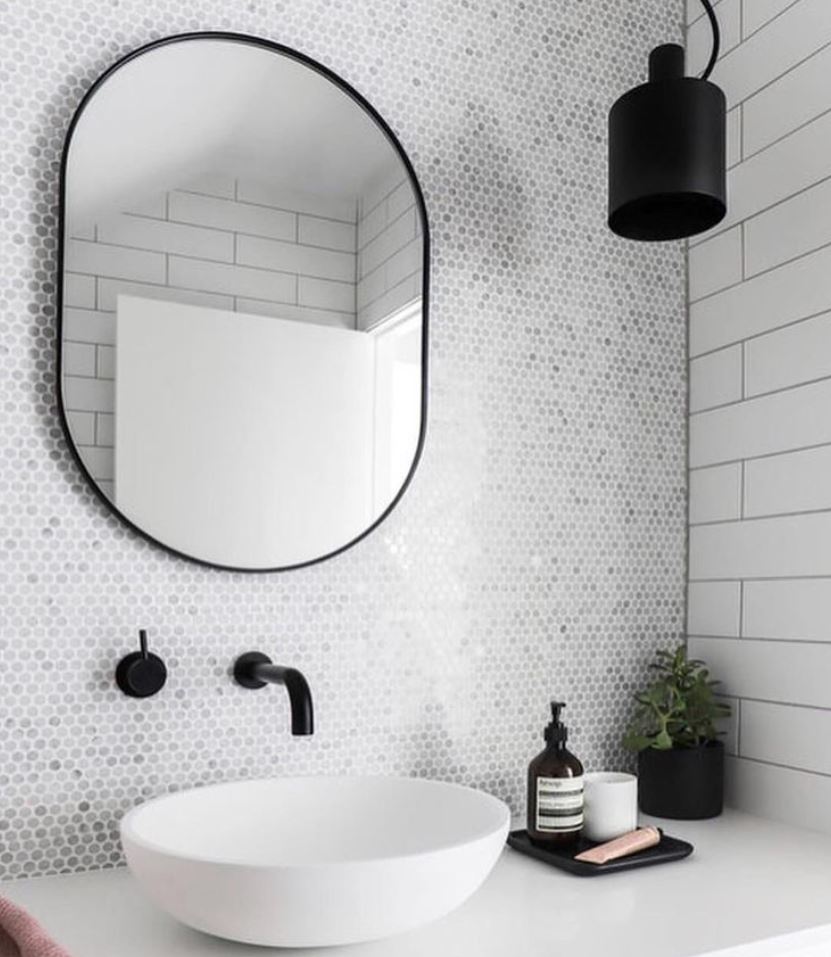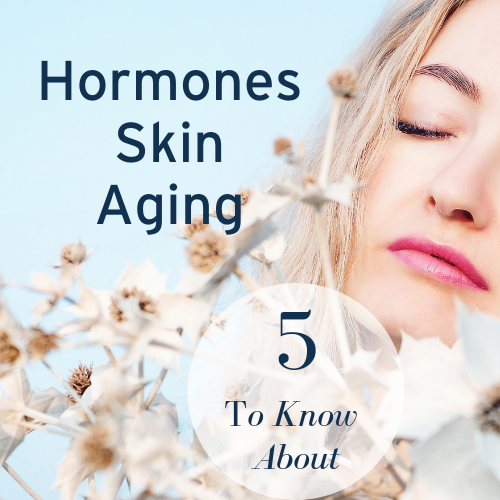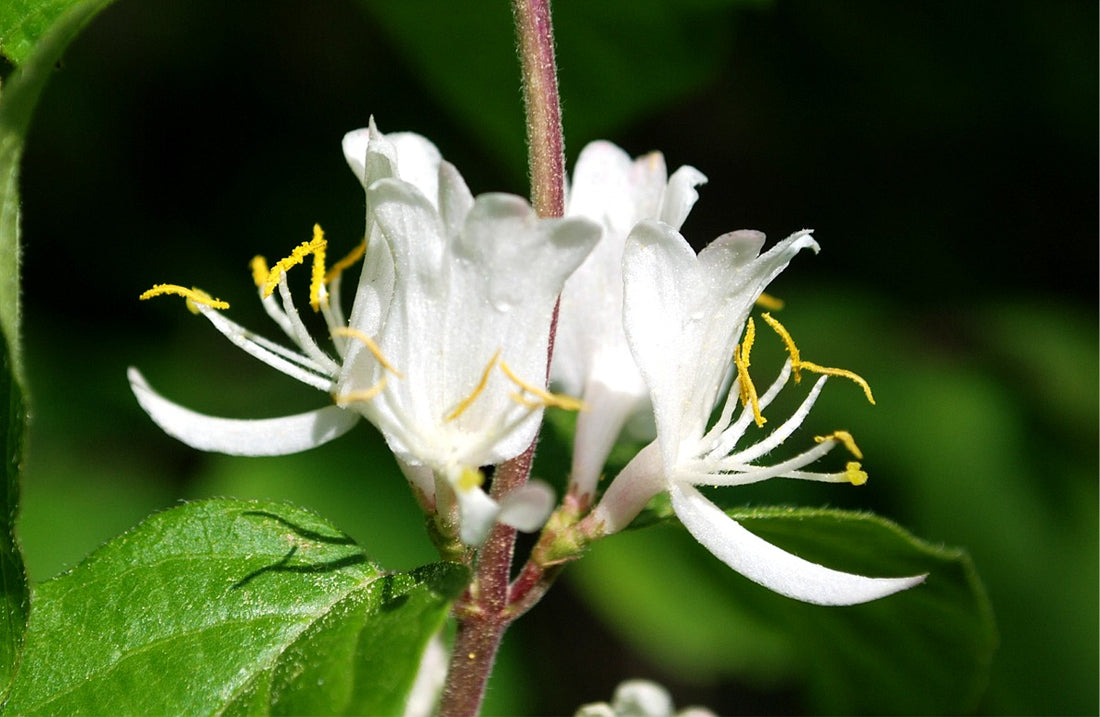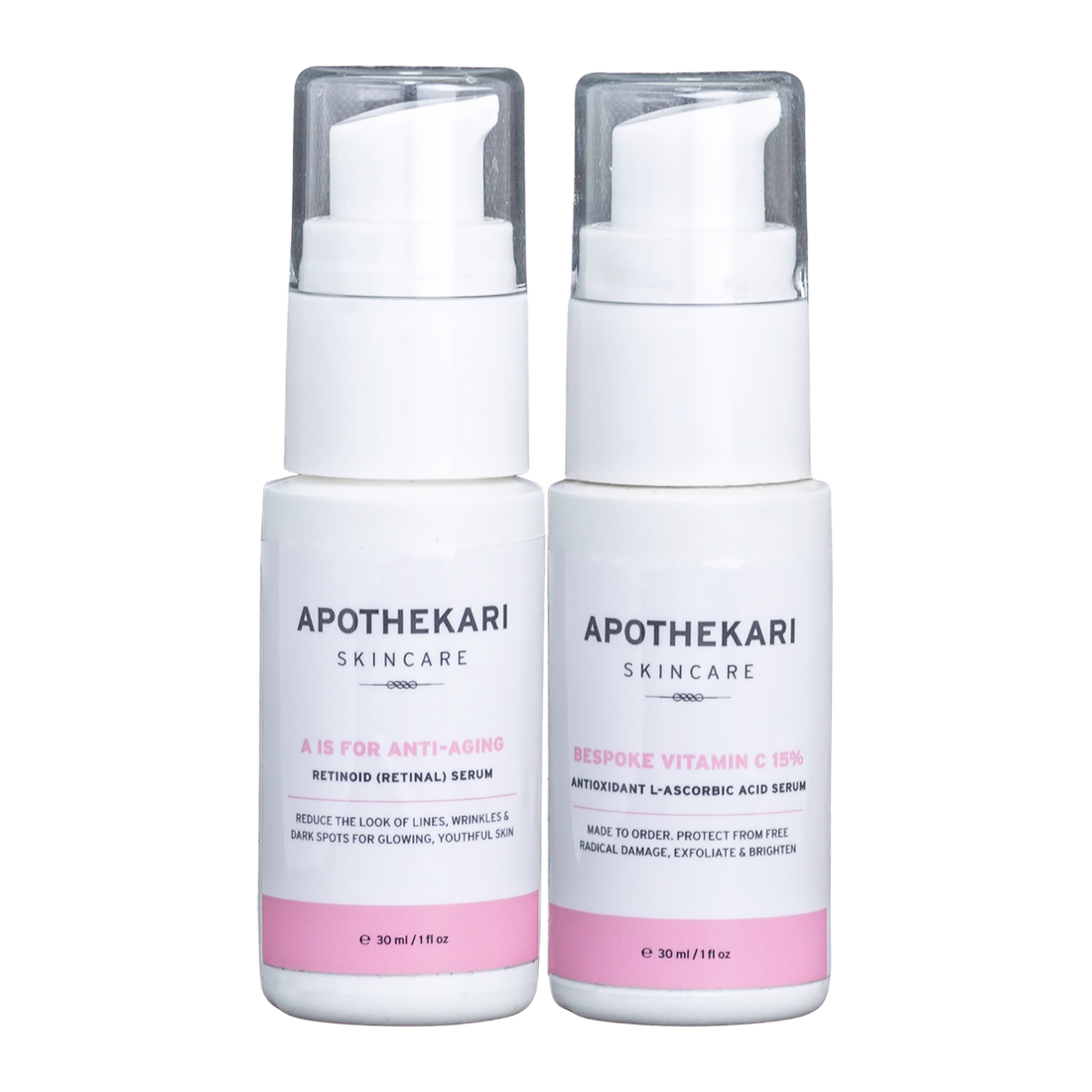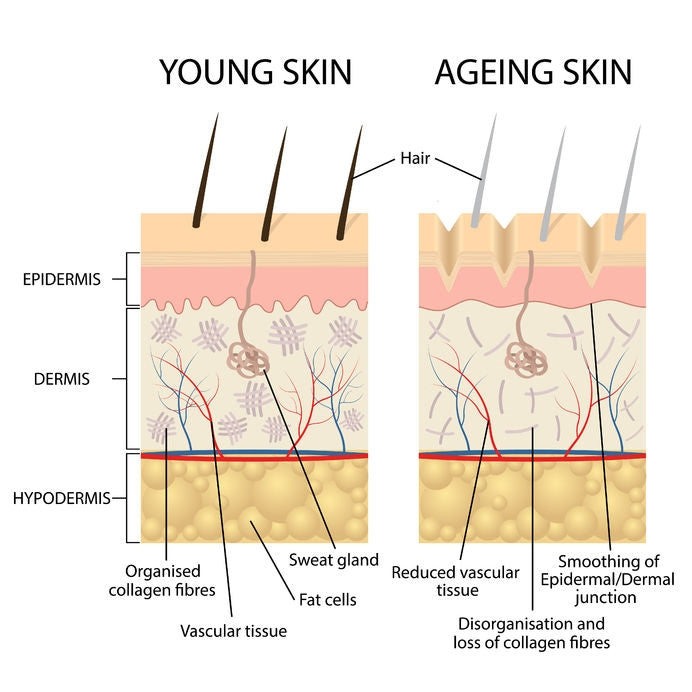Blog
This Serum Can Fight Free Radicals
Learn how to fight free radicals, molecules which can damage skin, by adding this serum to your daily skincare routine. Shop Bespoke Vitamin C 15% What Are Free Radicals? ‘Free radicals’ AKA Reactive Oxygen Species (ROS) impact our health, including that of our skin. They are created in our bodies as a result of exposure to certain different physical or chemical conditions or illness, including pollution, UV rays, some pesticides and smoke along with the consumption of excess alcohol and some fried foods. Free radicals are thought to contribute to diseases such as heart disease, autoimmune disorders (like rheumatoid arthritis), diabetes and degenerative diseases (Huntington’s or Parkinson’s disease) as well as cancer. Age-related changes in our appearance, including a loss of skin elasticity, wrinkles, graying hair, hair loss, and changes in hair texture are also thought to be related to free radicals. That’s why it’s important to fight free radicals. How to Fight Free Radicals in Skin Once free radical damage starts, it’s thought that a ‘cascade’ of damage occurs, producing more free radicals and speeding up the process of cell damage. This buildup of free radicals offers one explanation for why even healthy bodies age and deteriorate over time. Antioxidants are highly stable molecules, which donate an electron to free radicals, reducing their path of destruction and thereby lessening the damage they cause. Because they are so stable, antioxidants can do this without becoming free radicals themselves. Our bodies make several important antioxidants – glutathione, catalase, superoxide dismutase – and we can help to fight free radicals even further by consuming antioxidant rich foods or by applying them topically. One single antioxidant isn’t enough; we benefit from a combination of including the following: Vitamin C Vitamin E Ferulic acid Green Tea Resveratrol Coenzyme Q10. Apothekari Bespoke Vitamin C Serum is made with a combination of antioxidants and designed to fight free radicals, promote collagen synthesis, brighten skin tone and improve the appearance of aging skin. It is available in a 10% (sensitive skin) or 15% concentration (non-sensitive skin) and each bottle is made fresh to order, guaranteeing its potency. Apply to skin daily every morning to fight free radicals leaving skin looking more youthful and radiant. Top Tip: Eat Your Antioxidants While the topical application of antioxidants is beneficial to skin, we can’t discount the importance of nutrition. Fruits, vegetables and spices including onion, garlic, turmeric, cinnamon and ginger are a major source of antioxidants, which can help to reduce the risk of developing certain diseases. Enjoy the variety; it is the spice of life after all!
Learn moreBoost Collagen With This Face Serum
Boost collagen with Apothekari A is for Anti-Aging, a face serum that can help keep skin looking healthy and youthful. Shop A Is for Anti-Aging Serum (Our Retinoid Formulation) What is Collagen? Collagen is the protein most abundant in mammals and it’s behind pretty much everything holding you up right now – your bones, skin and muscle. Collagen is made up of amino acids, the building blocks of protein, which give strength and structure to tissues. This allows us to remain bendy, bouncy and generally supple. It’s one of the main components of skin but we sadly start to lose collagen as early as our twenties. Over time, this can lead to fine lines, wrinkles, sagging and loose skin. Fortunately, we can help to boost collagen levels with a combination of factors including lifestyle changes, sound nutrition plus topical treatments including this face serum, A is for Anti-Aging. Sunscreen and antioxidants are a great first defense against damage to collagen. Exposure to UV rays turns up the production of MMPs (matrix metalloproteinases), a group of enzymes responsible for the degradation of most of the body’s proteins like collagen. A well formulated sunscreen, like Shade SPF 30, along with an antioxidant treatment can help to neutralize free radicals and quash inflammation. The good news about some antioxidants, like Vitamin C and green tea, found in our Bespoke Vitamin C Serum, is that in addition to protecting against free radicals, they also protect against collagen loss and help to boost its production. Learn more about how to beat sun damage here. This Face Serum Can Help To Boost Collagen While collagen creams are available, the collagen molecule itself is too large to penetrate skin to where it’s needed, deep in the dermis layer. The better way to boost collagen is to apply treatments that contain ingredients which have been shown to stimulate the production of collagen. In addition to antioxidants, peptides plus retinoids have been shown to boost collagen production. Retinoids like prescription retinoic acid or over the counter retinaldehyde, found in our A is for Anti-Aging Serum, have been around for a while and have a lot of evidence to support their ability to boost collagen levels. They work by ‘turning on’ genes and cells that are involved in collagen production and also help to organize new and existing collagen. Over time, they can minimize the appearance of fine lines and wrinkles. The biggest downside of retinoids is their ability to cause skin irritation. That’s why we are such big fans of the retinaldehyde found in A is for Anti-Aging, which is not only effective, but also the least irritating of all retinoids. Retinaldehyde is supported by other ingredients that can help to protect and improve skin’s appearance. Lifestyle Factors Beyond protecting collagen in your body with topical treatments, there are other things you can do as well. Smoking, stress, excessive alcohol consumption and a diet high in sugar and processed food can all accelerate the loss of collagen. Consume foods high in lean protein, essential fatty acids, fruits and vegetables, which contain amino acids, anti-inflammatory and antioxidant ingredients and help create a foundation for firm skin. Don’t skimp on protein, which is needed to produce collagen. If you’re curious about whether collagen supplements can help to boost collagen levels, know that while the research looks promising, it isn’t yet conclusive. For best results, look for brands that contain hydrolyzed peptides as these are the best way for the collagen stimulating molecules to reach your bloodstream. Other nutrients such as lysine, MSM (methylsulfonylmethane) and keratin stimulate collagen and vitamin C is essential for its production as well.
Learn moreCanada Day Contest - Win! Apothekari Skincare Set
CANADA DAY CONTEST Win! Apothekari Skincare Set As a proud Canadian company (Vancouver based), we are getting into the spirit of Canada Day by celebrating with a contest! Enter for a chance to win an Apothekari skincare set on Facebook and/or Instagram*. ***This contest is now closed! Thank you all for entering and for your great comments! Congratulations to Adela Patoni, the winner of our contest!*** Prize: One lucky winner will receive an Apothekari Anti-Aging Skincare Set (Value $255) filled with essentials for healthy & beautiful skin. Learn how these products can help beat sun damage this summer. This set includes: Shade SPF 30 Sunscreen: Mineral based, non-whitening & broad spectrum sun protection A is for Anti-Aging Serum: Minimize wrinkles, brighten skin & defend against sun damage Bespoke Vitamin C Serum: Protect against free radicals, brighten skin & exfoliate $40 Gift Certificate to apply to a future Apothekari purchase. How To Enter: Our Canada Day Contest is an online contest and you can enter through Facebook and/or Instagram*. Increase your chances of winning by entering in both methods; however, only one entry is allowed for each method. Facebook Entry: Go to the Canada Day Contest post on the Apothekari Facebook page timeline. Complete 2 steps to qualify as one valid entry: LOVE the contest post, and COMMENT by telling us why you love Canada and who you will celebrate with. Instagram Entry: Go to the Canada Day Contest post on the Apothekari Instagram Feed. Complete 3 steps to qualify as one valid entry: FOLLOW us @apothekariskin, and LOVE the post COMMENT by telling us what you love about Canada and tag 3 friends. Bonus Entry: Subscribe to our newsletter at the bottom of this page for a bonus entry. This information will not be shared with any other party outside of Apothekari. Canada Day Contest Conditions: This contest is run by Apothekari Skincare (Harmani Enterprises Ltd.) Contest closes July 3, 2019 (noon, PST) No purchase necessary to enter. Maximum one entry per person per social media platform. Bonus entry for subscribing to newsletter. Participants must be 19+ and a resident of Metro Vancouver to qualify for the prize and free delivery. One (1) winner will be selected in a random draw from among all eligible entries received via all entry methods and contacted by Facebook Messenger, Instagram Direct Message or email. The winner’s full name is required before being awarded the prize. Once contacted, the winner will have 24 hours to reply and accept the prize. If the winner does not meet the contest conditions, then there will be a redraw. The winner will be announced on the Canada Day Contest Post on Apothekari Skincare’s Facebook page and Instagram account once the prize has been accepted. Prize must be accepted as awarded. No substitutions. Not redeemable for cash equivalent. The winner’s home address is required for the delivery of the prize. The value of the prize is based on the retail value of the products. The prize package is valued at $255 and contains the items in our Anti-Aging Set, outlined above. If you wish to purchase the Anti-Aging Set, visit our online store at PhaMix.com. *This contest is in no way sponsored, endorsed or administered by, or associated with Facebook or Instagram. By entering, entrants release Instagram and Facebook of responsibility, and agree to Instagram’s and Facebook’s terms of use. Apothekari Clean Skincare Formulations You’re concerned about what you put on your skin and we are too. Our clean skincare formulations are made with naturally safe ingredients that are also free from: Aluminum Baking Soda Silicone Parabens Phthalates Formaldehyde Synthetic Colourants Synthetic Fragrances SLS (Sodium Lauryl Sulfate) and SLES (Sodium Laureth Sulfate) And, Apothekari Skincare products are never tested on animals. Except the human kind, of course! Apothekari Skincare products are registered with Health Canada. Learn more about our philosophy here… Photo credit: Yasmeen Strang Photography
Learn moreHow To Reduce Wrinkles
If you’re curious about how to reduce wrinkles, this post explains that. Wrinkles are one of the most common symptoms of aging skin, but using the right products – a sunscreen like Shade SPF 30 and a retinoid like A is for Anti-Aging Serum, can help to reduce them. Shop A Is for Anti-Aging Serum (Our Retinoid Formulation) What is a Wrinkle? Wrinkles are creases, folds, or ridges in the skin, which tend to appear as we get older. They are most frequently found on parts of the body that are exposed to sunlight, including the face, the neck and chest, the back of the hands and the arms. Sun damage, smoking, some medications and dehydration along with environmental and genetic factors can influence their development. Facial expressions, such as repeatedly smiling, frowning, or squinting may also lead to fine lines and wrinkles. And, the thinner, drier and less elastic skin that accompanies aging, impact their formation as well. Younger skin has more elasticity, allowing it to spring back. The aging process makes springing back harder and less frequent, resulting in permanent lines aka, wrinkles. Wrinkles – Lifestyle and Environmental Factors Unprotected exposure to UV light is thought to be one of the biggest contributors to wrinkle development. UV rays break down collagen and elastin fibers, which form part of the skin’s supporting network. This damage results in skin that is weaker and less flexible, causing it to droop and wrinkles to develop. This is why sun protection is one of the best things you can do to reduce wrinkles. Wear a broad spectrum, UVA/UVB blocking sunscreen with a minimum SPF of 30 every day, year round. Shade SPF 30 is a naturally safe, mineral-based (zinc oxide) and non-whitening formulation to consider Cover up with clothing, seek shade, wear hats and sunglasses to protect skin against sun damage Smoking speeds up the aging process by reducing blood supply to the skin. Excess consumption of alcohol can result in dehydration, which causes skin to become dry and appear more wrinkled. And finally, sleeping on your side or face contributes to face lines while repetitive facial expressions (like squinting) overworks facial muscles and can result in grooves beneath the skin’s surface, which eventually leads to wrinkles. Treatments That Reduce Wrinkles When it comes to topical ingredients, there are a few that can help, but retinoids, which are derived from vitamin A, are supported by the most amount of research to support their efficacy in the reduction of fine wrinkles. They have also been shown to reduce pigmentation and decrease skin roughness. Retinoids include ingredients such as retinoic acid, retinaldehyde, retinol and retinyl palmitate. They work by increasing the production of collagen and by stimulating the production of new blood vessels in the skin, which improves skin color. It takes about three to six months of regular use before improvements in wrinkles are apparent and the best results take six to 12 months. The one downside of retinoids is that they can cause skin dryness and irritation so it may be useful to gradually work up to nightly applications, especially if you have sensitive skin. Retinaldehyde, which is found in A is for Anti-Aging is effective and one of the gentlest forms of retinoid available, making it suitable for most skin types. Retinaldehyde has the added benefit of being antibacterial, which delivers benefit to acne sufferers as well. A is for Anti-Aging also contains niacinamide, which can stimulate collagen production. The combination helps to minimize fine lines and wrinkles. Keep in mind that retinoids are broken down in sunlight so apply this serum at night in order to maximize benefits. A two-pronged approach will serve you best when it comes to wrinkle reduction: sunscreen every day in the morning and a retinoid each night.
Learn moreAll Skin Needs These 3 Anti-Aging Products
All skin benefits from 3 anti-aging products in order to keep it looking its very best – a sunscreen, an antioxidant treatment and a retinoid. In this post, we’re diving into why these products are so important if you’re interested in maintaining healthy and beautiful skin. (This set has been discontinued. Consider our Ageless skin set instead) Shop Apothekari Ageless Skin Set Here’s How Your Skin Ages Skin ages in two main ways – extrinsically and intrinsically – discussed in detail in an earlier post. Extrinsic aging occurs as result of things happening outside our bodies – UV rays, pollution, smoking & smoke exposure as well as diet and lifestyle. These factors are the biggest contributors to skin aging and can lead to thick and coarse skin, age spots and wrinkles. They can also influence the development of many types of skin cancer. Over time, ultraviolet light can damage elastin, collagen and glycosoaminoglycans (GAGs), proteins and sugars naturally found in skin and which help to keep it firm, supple, hydrated and line free. Intrinsic aging occurs naturally over a period of years and is related mainly to our genetic make-up along with hormonal and metabolic processes. If you’re interested to know more, we’ve written a detailed post on what happens to skin at menopause . Don’t be disheartened, though. If you’ve been dealt a bad hand when it comes to your genes, a healthy lifestyle, along with the right kinds of skincare products, can help to counteract many of the effects of your genes. All Skin Needs These 3 Anti-Aging Products Preventing skin damage is one of the best things you can do for your skin in the long term. Exposure to the sun’s rays is thought to be responsible for more than 80% of skin aging and ultimately leads to skin that is saggy, less resilient, wrinkled and possibly discolored. Anything you can do to protect skin from this damage is your best insurance against the effects of aging. Additionally, products that perfect skin to correct damage or imperfections are just as important. These 3 anti-aging products are the ones backed by clinical research and years of experience as offering the most benefit to skin: Sunscreen. A sunscreen that protects against both UVA (AGING) and UVB (BURNING) rays is essential to any skincare routine. Apothekari Shade SPF 30 delivers just that in a non-whitening, mineral based (zinc oxide), non-greasy formulation. Antioxidant. Antioxidants help to protect skin from damage caused by free radicals when we’re exposed to sunlight and pollution, for example. They should be applied to skin every morning along with sunscreen because they help boost the effectiveness of one another. You can find the most widely researched antioxidant, Vitamin C (as L-ascorbic acid) plus a range of other skin beneficial antioxidants such as ferulic acid, green tea, astaxanthin, alpha lipoic acid and pomegranate seed oil in our Bespoke Vitamin C Serum, made fresh for each order. Retinoid. We LOVE retinoids at Apothekari! Retinoids are a class of ingredients that are derived from Vitamin A and which include prescription retinoic acid and tazarotene plus over the counter options such as retinol and retinaldehyde. In addition to helping boost collagen and elastic production, they increase skin cell turnover (getting new, healthy skin cells to come to the surface), reverse sun damage and minimize the appearance of wrinkles and fine lines. We are big fans of retinaldehyde, which delivers results while being one of the gentlest retinoids, making it suitable for most skin types. Retinaldehyde also has antibacterial effects, making it a useful addition to the management of acne. Find retinaldehyde in A is for Anti-Aging, where it is combined with other skin beneficial ingredients. Are you ready to up your skincare game with these 3 anti-aging skincare products?
Learn moreA Light Face Moisturizer for Warmer Weather
If you’re looking for a face moisturizer for warmer weather, Apothekari Daily Infusion Moisturizer may be just what you’re looking for. In this post we’re discussing tips to help you find one that’s just right for your skin. Want information about moisturizers in general? Check out this post we wrote earlier. Shop Daily Infusion Moisturizer A face moisturizer is a product that we apply to skin to relieve dryness and make it feel more comfortable. They can range from lighter serums and lotions to heavier and thicker treatments such as petroleum jelly (although this isn’t something we’d recommend!). Water qualifies as a moisturizer, but because it evaporates quite quickly, it’s not very effective on its own. The ideal face moisturizer falls somewhere in between water and petroleum jelly and many customers find that a product like Apothekari Daily Infusion Moisturizer works perfectly for them all year round because it moisturizes without leaving skin feeling greasy. It’s also suitable for all skin types. Moisturizer Ingredients Moisturizers are made up of three main types of ingredients: Humectants. Deliver moisture to skin by either grabbing it from the environment or pulling it from the skin’s deeper layers (dermis) to its surface layers (epidermis). Hyaluronic acid (sodium hyaluronate), glycerin, propanediol, honey and propylene glycol are all examples. Emollients. Soften and smooth skin by filling in the gaps. May also lock in moisture. Fats and oils like vitamin E, cholesterol, jojoba oil and some silicones are emollients. Emollients may also have occlusive action. Occlusives. Work by forming a thin, oily layer over skin, helping to lock in moisture. They should be applied over damp skin, ideally. Lanolin, beeswax, petroleum jelly and fatty alcohols like cetyl alcohol and stearyl alcohol are occlusive. Some occlusives may also have emollient activity. The combination and amounts of each ingredient influence how light or heavy a moisturizer feels. A Face Moisturizer for Warmer Weather Humidity (the amount of moisture in the air) changes depending on where you live or the season. Tropical locations and summer often bring higher humidity while winter and desert or cooler climates tend to be drier. A heavy moisturizer (one with more emollient and occlusive ingredients) that was perfect for cooler winter temperatures may feel too heavy now. If you find that your skin is left feeling greasy or oily now that it’s warmer outside, it may be time to revisit the moisturizer you’re using. Opt for one that contains fewer occlusive ingredients and that contains more humectant ingredients. Our Daily Infusion Moisturizer has a good balance of humectants (glycerin), light emollients (caprylic/capric triglyceride, coco-caprylate/caprate, squalane) and occlusives (cetearyl alcohol, cetearyl glucoside, glyceryl stearate) to deliver light moisture that all skin loves. We refer to it as the ‘Goldilocks of Moisturizers’ because most of our customers feel it’s just right! Tips: In order to maximize the effectiveness of your moisturizer, keep the following in mind: Apply over damp skin to lock in moisture. Moisturize as often as you need to. Don’t forget sunscreen to help protect skin against damage from UV rays. Now you and your face are ready for summer!
Learn moreA Gentle Facial Cleanser for Spring
Spring has sprung (!) and what better time to talk about cleaning, especially as it pertains to our faces and in choosing a gentle facial cleanser to suit your needs. We may be seeing more sunshine, but cooler temperatures and lower humidity still, may dictate the use of more gentle products in your skin care routine. In this post we’re looking at different types of cleansers to help you determine if a more gentle facial cleanser is what your skin will benefit from this season. Shop Cloud Nine Foaming Cleansing Creme Cleansing is an essential part of an effective skin care regimen because it helps to remove dirt, oil and make-up and preps the skin to absorb treatments applied afterwards. How To Cleanse Regardless of which type of cleanser you choose, it’s important to cleanse correctly: Clean Hands. This helps ensure that you don’t introduce more dirt or bacteria to your face. Use Lukewarm Water: Hot water can dry or irritate your skin and cold water is not very effective at helping to loosen dirt or oil. Massage Gently. Use circular motions to cleanse avoiding rubbing or tugging too hard. Rinse Well. This helps to ensure you remove all traces of cleanser. You can also finish off with a warm washcloth, if that’s your preference. Pat Dry. Use a clean towel and be gentle. There’s no need to get every drop of moisture off. While the jury is still out on how often to cleanse, many agree that once or twice a day is best for most people. An evening cleanse before bed is necessary to remove, dirt and make-up but a morning cleanse can be skipped if your skin is dry and/or sensitive. If you wake with oily skin, you may wish to do a morning cleanse as well. Yes, Gentle Facial Cleansers Exist! Amaranth Plant (source of hydrolyzed amaranth protein for gentle cleansing) In a previous post, we discussed the 5 main types of cleansers you can choose from: Cream. Creams are generally the most moisturizing type of cleanser and ideal for dry, normal and sensitive skin. Apothekari Cloud Nine Foaming Cleansing Crème is an example of a cream cleanser. Gel. Lighter in texture than most other types of cleansers, gels often foam and may contain actives such as alpha hydroxy acids (AHAs) or salicylic acid. Apothekari AHA-Mazing Clean Gel contains alpha hydroxy acids to exfoliate and clean without stripping away natural oils. Cleansing Oil or Balm. Cleansing oils (liquid) and balms (solid) work as ‘magnets’ to attract impurities like dirt and oil away from skin. They are often used as a first step in the ‘double cleansing’ method. Micellar. Water-based and non-soap, micellar cleansers are made up of tiny molecules (micelles) that attract dirt and debris without disturbing the skin’s natural oils. They make excellent make-up removers. Powders. Powders are a dry mixture of oil-absorbing and exfoliating granules. They are designed to be mixed with water to cleanse and exfoliate. How To Choose a Gentle Facial Cleanser All cleansers help to remove dirt and oil with the difference being in HOW they achieve that. Creams, oils and balms tend to be suitable for normal to dry skin. Gels and powders are great for combination and oilier skin while micellar cleansers generally can be tolerated well by all skin types. For many of us, the lower temperatures and lower humidity associated with winter and spring may lead to drier skin so for this reason, a gentle facial cleanser may be a good choice right now (and year round). Look for formulations that contain: Mild surfactants (surfactants help with foaming). Strong surfactants like sodium laureth sulfate tend to be quite drying for most skin types so avoid if you can Emollients like Cetyl Alcohol, which help to soften and soothe skin Humectants like glycerin to help attract moisture Apothekari Cloud Nine Foaming Cleansing Crème is a mild and moisturizing cleanser that contains a natural mild foaming peptide derived from organic amaranth. It also contains antioxidant and anti-inflammatory ingredients to not only clean, but also moisturize and protect skin. Suitable for all skin types, including sensitive skin and individuals with rosacea, we love how it foams and cleans without stripping skin. It’s our go-to cleanser during the cooler months of the year.
Learn moreA 3 Step Skin Care Routine, Especially Through Menopause
When it comes to putting together a skin care routine through menopause, we’ve got you covered! There’s no shortage of advice on the internet about how to put together a skin care plan, regardless of the stage of life you’re at. Ranging from the 10 Step Korean Skin Care Regimen to 7 Step Schedules and whittled down versions as well, the confusion is understandable. Do we really need 10 steps? Can we get away with just one? Shop Aha-Mazing Clean Gel Cleanser Shop Cloud Nine Foaming Cleansing Creme SHOP RADIANT SKIN SET Like you, our time is precious, so anything that involves too many steps isn’t going to cut it. 7 is a stretch and 10 is most definitely too many! We’d love to tell you that you could get away with just one, but alas, that would be a fairy tale and over here, we’re all about keeping things real. While we’ve blogged previously about 4 steps to great skin, we’ve managed to whittle it down to a doable 3 steps. We hope you’ll agree that this is manageable indeed. Why You Need a Skin Care Routine Great skin comes down to two main factors – your DNA PLUS your daily habits. If you won the gene pool lottery, then lucky you. However, it’s important to acknowledge that one can’t rely completely on a genetic advantage when it comes to skin. Conversely, if your genes are against you, all is not lost. A well thought out and regular skin care routine can have a big impact on how your skin ages regardless of your genes. Of course, what constitutes a good routine can differ depending on who you speak to. It’s no wonder that many of us may be left feeling completely confused and unsure about where to begin. Caring for your skin shouldn’t be (and really isn’t) all that complicated. You just need to know the right steps to follow. Through menopause, many women struggle with dryness while others experience acne, even if it’s not something they’ve had to contend with before. You may feel as if you’re reliving your teen years again! Hormonal fluctuations are responsible for many of these skin changes so it may be necessary to revisit your skin care routine and consider changing up the products you’re using. By selecting and using products best suited to your individual needs and ensuring that you follow a well thought out skin care routine, you’ll be well on your way. Let’s get to it. The 3 Steps Everyone Needs Here are the 3 steps everyone needs in their skin care routine: Step 1: Cleanse Step 2: Protect Step 3: Perfect Step 1: Cleanse Cleansing is an important and often neglected part of a skin care routine. Beyond removing make-up, dirt and oils from your face, cleansing helps to provide a clean skin surface, allowing any products that you apply on your skin to be absorbed better. Cleansing also helps to reduce blemishes, redness and irritation, which may be caused by an accumulation of make-up, pollution, dirt and oil. It’s a matter of personal preference whether you choose a one-step or two-step cleansing method. Over here, we go back and forth between the two, depending on the time of year, how our skin feels, how much make-up we’ve applied and also by how lazy we feel! (It’s not a good reason, we agree. But, we also recognize that we’re human). We offer two cleansers at Apothekari. Cloud Nine Foaming Cleansing Crème may be used by all skin types, including individuals with sensitive skin or rosacea. It’s a very gentle cleanser and if you’ve found your skin getting drier and/or more sensitive, it’s a good one to consider. AHA-Mazing Clean Exfoliating Cleanser Gel, provides gentle exfoliation and foaming action with a triple combination of alpha hydroxy acids (AHAs). If you prefer more sudsing action or your skin is on the oilier side or you have acne, then this is the cleanser for you. It may be used by all skin types, but caution should be exercised if your skin is overly sensitive skin or if you have rosacea. Step 2: Protect We’ve all heard the saying, “An ounce of prevention is worth a pound of cure” and this holds true when it comes to your skin. Prevent skin damage by protecting your skin with the right ingredients and your skin will reap the rewards for years after. Two types of ingredients are important to know about when it comes to protecting skin – antioxidants and sunscreens. Antioxidants include ingredients like Vitamins A, C and E, green tea extract, pomegranate seed oil, coenzyme q10, etc. They exert their action by helping to prevent skin damage associated with free radicals, unstable molecules that are formed by exposure to the sun’s ultraviolet (UV) rays and pollution, amongst other things. Free radicals lead to a range of unwanted effects including hyperpigmentation and collagen destruction, associated with lines and sagging. Antioxidants can also help boost the effectiveness of your sunscreen. Sunscreens protect skin by minimizing damage caused by UV rays, which are thought to be responsible for more than 85% of skin aging. Hands down, wearing sunscreen daily is one of the most important things you can do to keep your skin looking its best. You can choose between a chemical or physical blocking sunscreen and the choice is up to you. Well formulated and effective products are available in both categories. We’re big fans of physical sunscreens formulated with zinc oxide because zinc is a very soothing skin ingredient and the only sun filter that delivers protection against the full spectrum of UVA and UVB rays. We know you’re wondering…. is it possible to find a product that combines a sunscreen with antioxidants? Yes, it’s possible to find sunscreens that contain antioxidants and Shade SPF 30 is one. However, most sunscreens don’t contain levels of antioxidants high enough to deliver the maximum protection against free radicals. For the greatest benefit, most experts recommend that you apply both an antioxidant formulation (consider our Bespoke Vitamin C Serum 10 or 15%) and a sunscreen in the morning. Generally, apply the antioxidant first, followed by sunscreen. Step 3: Perfect Once you have the basics of Steps 1 and 2 covered, it’s time to look at your specific skin needs. This will differ depending upon your age, your ethnicity and even where you live (climate, humidity, etc). Whether, you’re worried about wrinkles and fine lines, crows feet, dark circles, hyperpigmentation, dry skin or acne, Step 3 focuses on that. It’s important to find and use treatments that are designed to address your skin’s specific problems. You can choose from a range of products including moisturizers, eye treatments, skin brighteners, acne remedies and various serums. Some treatments, like sunscreens, are designed to be applied during the day. Others, like retinoids (which tend to degrade when exposed to sunlight, are best used at night). Antioxidants, moisturizers, eye creams, skin brighteners etc may be used day and/or night. Whatever you use, give the product a fair chance to make a difference. New skin cells turn over once every four to eight weeks so you need to wait at least that long to determine if the product is working. Regardless of your specific skin needs, one ingredient that’s a must for anyone concerned about healthy and beautiful skin, is a retinoid. Retinoids are derived from Vitamin A and deliver a range of skin benefits including: increasing collagen and elastin production to fight wrinkles, fine lines and skin sag; skin brightening effects, an increase in skin moisture content and a reduction in oil production. They not only help to improve the skin’s appearance, but can also reverse damage caused by the sun. Additionally, retinoids have anti-acne properties, making them a useful addition in the management of acne, which strikes many women through menopause. Apothekari A is for Anti-Aging contains retinaldehyde – a form of retinoid that offers effective yet gentle treatment. It’s well tolerated by most skin types, especially if introduced gradually into your skin care regimen. We know you have lots on your plate; we do too. That’s why we feel that 3 steps in your skin care routine are all you need to achieve healthy and beautiful skin at menopause or at any other phase of your life. Let’s keep things simple and uncomplicated AND with great skin to show for it!
Learn moreHormones, Skin & Aging: 5 Hormones You’ll Want to Know About
As you get older, you may be wondering about the connection between hormones, skin and overall wellness. And while there’s more talk about the topic these days, it’s still important to understand the intricate relationship between hormones and your skin’s health. So, let’s get to it! Shop All Apothekari Can Hormone Imbalance Cause Skin Problems? As we get closer to perimenopause and menopause, the hormone balance starts to change so you may start to notice a difference in the way your skin looks and feels. Hormones are chemical messengers, which tells cells–including skin cells–what to do. So when their balance is upset, you may very well notice a difference in your skin’s complexion. How Do Hormones Affect the Skin? There are many hormones in the human body and each play different roles when it comes to your health. In this post, we’re looking at five key players: estrogen, progesterone, cortisol, insulin, and testosterone, that can have an impact on your skin. Each one plays a unique role, but it’s also important to appreciate that they can have combined impact on your skin. Estrogen and Skin Aging. Our leading lady, estrogen, orchestrates the stages of puberty, pregnancy preparation, and overall skin vitality. However, estrogen gracefully takes a step back as we get older, leading to dryness and leaving our skin looking older. Stress and insufficient sleep–two factors that often come into play during the menopause transition–also influence estrogen production, which can impact the skin’s aging process. Progesterone and Skin Elasticity. Enter progesterone, the hormone which helps to enhance skin elasticity and blood circulation, ensuring that skin stays nourished. Yet, as time marches on, progesterone also starts to decline, leaving your skin looking lackluster. Menopause, stress, and health conditions all have the potential to disrupt the production of progesterone, and which can contribute to changes in skin texture. Cortisol: The Stress Hormone. Meet cortisol, often referred to as “stress hormone”, and which wreaks havoc not only on our mental state, but also can stage an aging performance on your skin. Studies reveal that stress-induced collagen loss, can lead to skin sagging, thinning and dullness, all resulting in a less vibrant complexion. Stress management is not only a wellness mantra; it’s also a crucial skincare strategy. Insulin and Skin Health. You may not think that insulin has much impact on how your skin looks, but it absolutely has an impact. Released in response to sugar consumption, insulin regulates blood sugar levels. High glycemic foods–you know, those cookies, donuts and sugary treats that many of us crave–might trigger insulin spikes, potentially impacting sleep and contributing to skin wrinkling. A gentle reminder that even our diet influences skin well-being. Testosterone and Skin Troubles. Whether in women or men, an abundance of testosterone might lead to unwanted acne. Aging introduces a double-whammy twist–women experience an increase in testosterone, which can bring about an increase in breakouts, while also experiencing a decrease in estrogen, resulting in drier skin. Does Balancing Hormones Help Skin? It makes sense that balanced hormones would be just the remedy that picky skin would benefit from. However, this is still a controversial topic in the field of medicine. If you feel that it’s something that you want to explore, check in with your doctor to discuss options and whether it makes sense for you. How Can I Balance My Hormones for Clear Skin? While your hormone levels can be up, down and all over the place as you get older, especially during the menopause transition, you can influence their levels to some extent. Focus on prioritizing good nutrition, stress management, regular exercise, and sufficient sleep. These will not only benefit your overall wellness, but your skin’s health as well. Which Hormone is Responsible for Glowing Skin? In our pursuit of radiant skin, we can’t overlook an unsung hero–melatonin. Produced in both your brain and skin cells, melatonin regulates sleep-wake cycles and acts as a potent antioxidant, helping to protect our skin against damage caused by free radicals. Studies regarding the use of topical melatonin are mixed as the hormone has been implicated in skin darkening because it activates melanocytes, the skin’s pigment cells. If you want to supplement with melatonin it’s best to take it internally rather than applied topically. While topical melatonin studies yield mixed results, internal supplementation is recommended for its potential benefits. What Hormone Causes Bad Skin? Identifying the culprit behind problematic skin brings us back to excessive testosterone. Whether in women or men, an abundance of testosterone might lead to unwanted acne. Your body deserves a thoughtful approach. Aging is inevitable and with it, comes many changes–those you can see and some that you can’t. When it comes to your skin, there are many safe and effective products that you can use to help combat the impact of changing hormone levels. Consider our Radiant Skin Set or our Ageless Skin Set, which are a great way to get you started on a skincare routine that can make a difference. And if you’re still not sure what to do, consult with your doctor or pharmacist. Aging doesn’t have to mean the loss of healthy and beautiful skin. Ask for help if you need it.
Learn more5 Questions to Ask Before You Choose a Moisturizer
If you’re wondering how to choose a moisturizer that’s right for you, you’re not alone. Moisturizers seem to be the number one requested product when we feel that something is wrong with our skin and in an earlier post I questioned whether or not you even need one. If you do, there are 5 questions to ask before you choose a moisturizer. Shop Daily Infusion Moisturizer What is a Moisturizer? Moisturizer is a broad term used to describe products that we use to make our skin feel more comfortable and lubricated (not dry). They range from very light products like serums and lotions to heavier and more occlusive ones like petroleum jelly. Water itself can moisturize skin but it evaporates very quickly. On the other end of the spectrum, petroleum jelly also moisturizes, but it is sticky and greasy unpleasant to use on a regular basis. An ideal moisturizer for most of us falls somewhere in between the two, containing some water with a heavier, occlusive substance to help lock it all in. Moisturizers are made up of 3 main types ingredients: Humectants. Attract water to the skin by grabbing it from the environment. Can also pull water from deep in the skin (dermis) to the surface layers (epidermis). Examples include honey, propylene glycol, propanediol, hyaluronic acid (sodium hyaluronate), glycerin, ethylene glycol. Emollients. Help to fill in the gaps in skin leaving it feeling softer and smoother. They may also help to lock in moisture. Includes lipids (fats) and oils such as jojoba oil, castor oil, vitamin E and cholesterol and some silicones as well. Emollients may also work as occlusives. Occlusives. Help to lock in water by forming a thin, oily layer over the skin. They work best when applied to damp skin. Examples include petroleum jelly, lanolin, mineral oil, silicones, beeswax, cholesterol and fatty alcohols including cetyl alcohol and stearyl alcohol. Many occlusives are also emollients. We’re big fans of Apothekari Daily Infusion Moisturizer , which contains a good balance of humectants (glycerin), emollients (caprylic/capric triglyceride, coco-caprylate/caprate, squalane) and occlusives (cetearyl alcohol, cetearyl glucoside, glyceryl stearate) and which is suitable for all skin types. How To Choose a Moisturizer Your choice of moisturizer depends on your skin type and the time of year. You may not require a moisturizer during the summer months, when traveling to tropical locations or when the humidity is high. However, when you travel away from home, the weather changes and/or the humidity drops, you may need to reassess your routine. Skin changes due to a number of factors so a routine that always used to work for you may need to be revisited every now and again. Here are 5 questions to ask before you choose a moisturizer that is best for your skin. What is Your Skin Type? Dry skin requires a moisturizer with more emollients and occlusive ingredients to help block water evaporation. Oily skin often does well with water-based products containing a lot of humectants (like a hyaluronic acid serum) or may be able to forgo a moisturizer altogether. Is Your Skin Dry or Dehydrated? Dry skin is skin that is lacking in oils while dehydrated skin is skin that it is lacking in water. Dry skin feels rough and appears dry and flaky. Dehydrated skin looks dull and feels tight and rough. It may show fine lines, sagging and wrinkles. Both oily and dry skin can be dehydrated, meaning that it is lacking in water or moisture. Dehydrated skin benefits from humectants to help hydrate and plump. Ingredients including glycerin, sodium hyaluronate and propanediol work well. What Time of Year is it? If temperatures have dropped and the air is drier (like now) or if you’ve traveled somewhere where that’s the case, you may need to introduce a moisturizer if you aren’t currently using one. Or, you may need to switch to one that contains more emollient and occlusive ingredients. Conversely, if it’s getting warmer and there’s more moisture in the air, you may need to swap out your heavier moisturizer for one that is lighter (more humectants and fewer emollient or occlusives). If you’re spending more time outdoors, consider that the sun’s UVA rays can lead to dehydrated skin so ensure that you are wearing a sunscreen and consider upping the moisturizer. Has Your Skin Experienced Age Related Changes? Our skin may become oilier as we enter adolescence. As we approach our twenties, it becomes drier. The hormonal changes that women experience as they age can lead to further dryness so it’s important to acknowledge that you may require a different moisturizer as you get older. What Type of Moisturizer Do You Like? Sometimes finding the right product can take a bit of trial and error. If you’re not happy with how your moisturizer feels on your skin, it may not be a good match. Shop around and test products until you find one that you enjoy using. Once you’ve found a moisturizer that works for you, keep the following in mind: Apply over damp skin to lock in moisture. Moisturize as often as you need to. Use SPF daily to help combat dryness and skin damage. Did this post help you with how to choose a moisturizer?
Learn moreAging Skin Products | 9 Treatments That Work
Following on our last post discussing aging skin, let’s look at aging skin products that can help keep skin looking young and vibrant no matter your age. SHOP RADIANT SKIN SET While we have yet to discover the fountain of youth when it comes to aging, science has given us solutions that can help to delay the inevitable. If you’re concerned about skin roughness, uneven skin tone, brown patches, age spots, thin skin and wrinkles, there are some aging skin products and procedures to consider. In this article, let’s take a closer look. Aging Skin Products & Treatments 1. Sun Protection It’s well known that exposure to the sun’s ultraviolet rays is the main cause of skin aging so we can’t discuss aging skin products without mentioning sunscreens. A well formulated sunscreen is THE MOST IMPORTANT aging skin product to include in your arsenal. Sunscreen protects against extrinsic aging (factors that occur outside our bodies), including exposure to sunlight and pollution. In general, choose a broad spectrum product that protects against UVA and UVB rays and is photo-stable. Apothekari Shade SPF 30 can’t be beat for it’s non-whitening, zinc oxide and antioxidant enhanced protection. A water resistant formulation is necessary if conditions warrant. Apply sun protection daily, year round – prevention really is one of the best strategies you can employ. Our post on choosing the safest sunscreen (the most effective too) is a good read if you are looking for guidance regarding product choice. And our store at PhaMix.com stocks a selection of the most effective and best-selling sunscreens you’ll find anywhere. 2. Antioxidants Antioxidants provide protection against free radical damage caused by exposure to UV rays, especially in the stratum corneum, the uppermost skin layer that sits on top of the epidermis. This process helps to reduce collagen degradation. While skin contains some naturally occurring antioxidants such as superoxide dismutase, catalase, alpha-tocopherol, ascorbic acid, ubiquinone, and glutathione, the application of topical antioxidants and a diet rich in antioxidants helps to increase the protection. Vitamins C, B3, and E are considered to be the most important antioxidants because they penetrate the skin easily. When vitamins C and E are combined, their antioxidant ability is higher than with either one used alone. Vitamin B3 (niacinamide) regulates cell metabolism and regeneration and has been shown in some studies to help improve skin elasticity, redness and pigmentation. Our Bespoke Vitamin C Serum contains an arsenal of antioxidants including vitamins c and e along with green tea extract plus other skin beneficial ingredients. 3. Cell Communicating Agents/Cell Regulators In particular, retinoids, including prescription retinoic acid and its derivatives along with over the counter options such a retinol, retinaldehyde and retinyl palmitate. These ingredients work to inhibit the breakdown of collagen and promote its synthesis, helping to maintain the skin’s structural integrity. Our A is for Anti-Aging Serum contains gentle, yet effective retinaldehyde plus other ingredients that deliver photo-aging protection, exfoliate, provide anti-inflammatory/anti-irritant benefits and brighten skin. As an added benefit, retinaldehyde shows anti-bacterial properties towards the acne causing bacteria, P. acnes. Peptides are another class of cell communicating ingredients which have the ability to stimulate collagen synthesis. 4. Chemical Peels/Exfoliants Chemical peels work by using a mixture of ingredients to help remove topical skin layers to deliver more evenly toned and tighter skin. A number of ingredients may be used as peeling agents and the depth of the peel relies on the substance used, its concentration, pH and time of application. You can purchase peels for at home use, which contain alpha hydroxy acids and beta hydroxy acids. View a range of exfoliants at our sister store PhaMix.com here. Because they don’t penetrate very deeply, they are safe and will deliver brighter looking skin. For longer lasting and more dramatic results, you can seek the help of a trained professional to conduct a deeper peel. Depending on the depth of the peel, you can expect an increase in collagen and more hydrated skin. Skin elasticity and wrinkles have also been shown to improve. While you get more dramatic results with deeper peels, the risk for side effects also increases. Hyperpigmentation, solar lentigines and the risk of post-operative infections are some of them. 4. Visible Light Devices Intense Pulsed Light (IPL) & Lasers are newer technologies that come with lower risk and shorter downtime than chemical peels and can improve the structure of the skin. The process relies on lasers, which emit light at varying wavelengths to stimulate new collagen formation. The absorption of light results in the release of inflammatory agents, which in turn stimulate new skin cell development, initiate tissue repair and enhance collagen and elastin formation. Different treatments have varying clinical effects so it is important to work with a trained professional to help select the procedure most suitable for your skin. 5. Injectables and Fillers The goal for injectables is to increase the ability of fibroblasts (responsible for the production of skin cells), enhance cell activity, increase hydration, and the synthesis of collagen, elastin and HA (hyalorunic acid). This is accomplished through the use of microinjections in the dermis with products containing either one active ingredient or a cocktail of different compounds: HA, vitamins, minerals, nutrients, hormones, growth factor, amino acids, etc. Platelet rich plasma (PLP), derived from fresh, whole blood is another ingredient that may be used. More detailed studies are required to evaluate just how effective these protocols are. Fillers, on the other hand, are aging skin products which are injected within or beneath the skin to improve its physical features. These include ingredients such as fat, cultured human fibroblasts, collagen (bovine-derived, human-derived from tissue culture), HA , synthetic or pseudo-synthetic implants (silicone, polymethacrylate microspheres, poly-L-lactic acid, calcium hydroxylapatite microspheres suspended in aqueous polysaccharide gel, alkyl-imide gel polymer). Their effects may be temporary, semipermanent (lasting between 1–2 years), or permanent materials (lasting longer than 2 years). 6. Botox Botulinum toxin (BTX) has no effect on skin texture and doesn’t stop the skin aging process. However, regular injections can slow down the visible aging process by helping to reduce certain dynamic facial lines and wrinkles. 7. Hormone Replacement Therapy As we get older, we synthesize less hormones including growth hormone (GH), and insulin-like growth factor-1 (IGF-1), melatonin (nocturnal), thyroid hormones, dehydroepiandrosterone (DHEA), estrogens, progesterone and testosterone. Studies have shown that supplementation with hormones including DHEA, GH, testosterone (in men), estrogen and progesterone (in women) are associated with a number of beneficial effects including an improvement in skin health. HRT, despite its benefits, has also been associated with negative effects including an elevated cardiovascular risk and increase of the risk of breast cancer. Given the potential for serious side effects, the decision to pursue hormone replacement therapy is something that individuals should discuss with their physician. 8. Plastic Surgery The most invasive of all procedures, plastic surgery is a consideration for individuals who aren’t satisfied with any of the above treatment options. Plastic surgery can help to correct wrinkles, restore (and redistribute) fat and volume loss, augment skin and contour it. It delivers the most noticeable difference to skin. However, this medical procedure comes with a cost – including a high price tag and the potential for medical problems. If you feel that it’s right for you, consult with an experienced and qualified health care professional. I’d be remiss in this post if I didn’t discuss the importance of lifestyle factors in helping to keep skin looking healthy. Not specifically an aging skin product, the impact of influences including sound nutrition, stress management, adequate sleep, physical activity and the avoidance of smoking, excessive alcohol consumption and too much sun can’t be underestimated. As with most things health related, prevention is best and it’s no different when it comes to that of your skin. We’ve covered a lot of different aging skin products in this post. Which are you using? Any you’re curious to try?
Learn moreAging Skin: 7 Things That Can Happen
Aging skin – it’s one of those unavoidable side effects of getting older. While we likely appreciate the wisdom, experience and sense of accomplishment that come with age, we may not necessarily applaud what looks back at us in the mirror. Shop Apothekari Ageless Skin Set Our skin ages in one of two ways – intrinsically or extrinsically. Intrinsic aging is the natural process that takes place over the years regardless of outside influences. Our genetic make-up, hormonal and metabolic processes account for intrinsic aging. Extrinsic aging occurs due to external factors such as sun exposure and environmental damage (pollution and smoking, for example). While we can’t necessarily control intrinsic aging, we can generally minimize the impact of extrinsic factors. Aging Skin Symptoms Aging skin tends to appear: Thinner and more transparent Slacker (saggier and looser) More fragile and more prone to damage (bruising) due to thinner blood vessel walls Drier Wrinkled Duller Rougher Unevenly toned. With age spots and possibly lesions. Different in shape In this blog post let’s look at the ways in which skin ages so that in part 2, we can visit some specific strategies to help keep your aging skin looking its very best. 1. Changes in the Epidermis This outer barrier of our skin protects us from environmental insults, such as bacteria and ultraviolet (UV) radiation. Due to the natural aging process and sun exposure, changes occur. The most obvious one occurs at the epidermaldermal junction – the space between the epidermis and the dermis – where a flattening of ridges occurs. This results in less surface contact of the epidermis and dermis and leads to a reduced exchange of nutrients between these two parts. Aging skin doesn’t get as much nourishment. 2. Changes in the Dermis The dermis sits under the epidermis and contains a very complex arrangement of proteins, including collagen and elastin, which are responsible for skin’s strength and elasticity. Fibroblasts (skin cells) start producing fewer proteins: Elastin, which gives our skin elasticity and rebound. The result is sag. Collagen, which gives our skin firmness contributing to a significant reduction in elasticity. The result is thinner more fragile skin. Glycosaminoglycans (GAGs), which help to keep skin hydrated. The result is more dryness. And, there are fewer Blood Vessels, resulting in less blood volume and leaving the area deficient in nutrients. 3. Changes in Fat Tissue The subcutaneous fatty layer (also called the hypodermis) below the skin starts to shrinks, resulting in sagging. Fat is depleted and accumulates in areas including the forehead, the mouth, the eyes, the nose, the jaws and the cheeks. In young skin, fat tissue is widely distributed, but in aged skin fat tends to accumulate in pockets, which droop and sag due to the force of gravity. 4. Hormonal Slowdown A decline in hormone production including estrogen, testosterone and dehydroepiandrosterone (DHEA) occurs. Other hormones such as melatonin, insulin, cortisol, thyroxine, and growth hormone decline too. Certain signaling molecules such as cytokines and chemokines decline as well, leading to the deterioration of several skin functions. Estrogen and progesterone are thought to contribute to skin elasticity. 5. Gravity Over time, gravity plays a role resulting in an altered distribution of fat, which contributes to sagging. This is particularly prominent in the upper and lower eyelids, on the cheeks, and in the neck region. gravity causes drooping of the eyebrows and eyelids, looseness and fullness under the cheeks and jaw (jowls and “double chin”), and longer ear lobes. 6. Facial Bones and Cartilage Expression lines appear as result of repeated facial muscle movement especially over the forehead and between eyebrows, and in nasolabial folds and eye areas. Repeated folding of the skin during sleeping in the same position on the side of the face contributes to appearance of “sleeping lines.” Bone mass declines and enhances the appearance of facial sagging and wrinkling. 7. Extrinsic Aging Possibly the biggest factor in aging skin is the impact of sun and environmental damage (tobacco use and exposure to pollution, for example), diet and lifestyle factors. These contribute to skin thickening, freckles and sun spots and possibly precancerous changes such as lesions called actinic keratosis and skin cancer (including basal cell carcinoma, squamous cell carcinoma, lentigo maligna melanoma). Over time, the sun’s ultraviolet (UV) light damages elastin, collagen and GAGs which causes the skin to sag, stretch, and lose its ability to snap back after stretching. The skin also becomes drier, bruises and tears more easily and takes longer to heal. The impact of sun damage may not show when you’re young, but it will later in life. As of yet, no one has found an answer to stopping the skin’s natural aging process. But rest assured, science has given us a few tools to counteract its impact. Yes, aging skin is an inevitable process but by starting to take care of your skin at an early age you can help to minimize the damage. All is not lost. In part 2, let’s take a look at this.
Learn more
